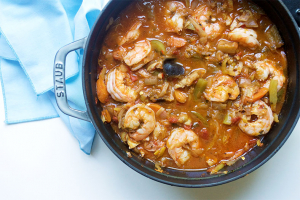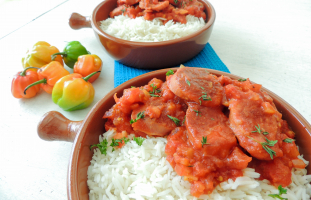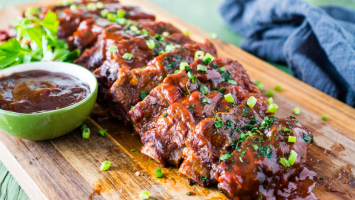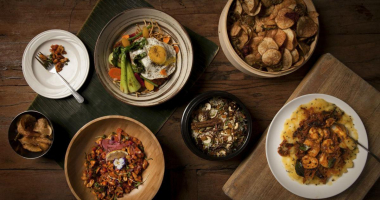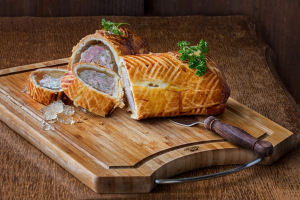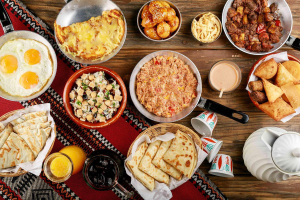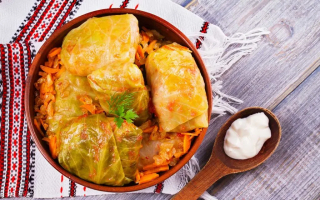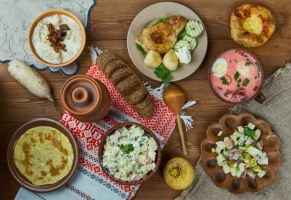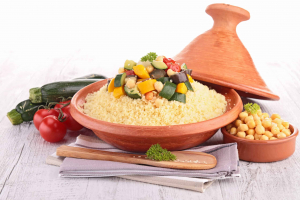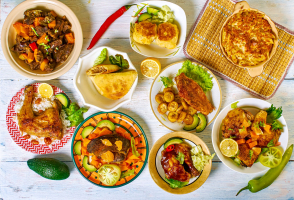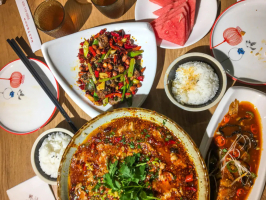Top 5 Best Foods In Eritrea With Recipe
Eritrean cuisine has merged with various cuisines, although each Eritrean recipe has its own distinct characteristics. This country's cuisine is also ... read more...influenced by Ethiopia, its neighbor. When you compare the two, you'll see that Eritreans prefer lighter-textured foods with fewer butter and spices. Furthermore, because Italy used to dominate Eritrea, you can detect various Italian influences in these dishes. That's why Eritrean cuisine usually gets people excited when they try it, and Toplist wants to help you feel the same way.
-
Order a steaming bowl of Shahan Ful, a slow-cooked fava bean dish, to soothe your rumbling stomach. While many people assume this is a Sudanese meal, it is undeniable that Shahan Ful is today a well-known Eritrean dish. Not only in your visiting country, but also in several other countries, such as Sudan (of course), Ethiopia, Somalia, and others. You can call it "Ful" if you can't recall its entire name. This is also a short name for the Egyptian fava bean dish Ful Medames, and both are made from fava beans.
Ingredients
- Ethiopian Shahan Ful: ½ cup onions (minced) , 1 tsp cumin, ½ tsp turmeric , 2 tbsp olive oil , 2 cloves garlic (minced), ½ cup tomato (small diced), ½ green chili or jalapeno (optional) , 2 cups stock (or water) for cooking, 1 cup white beans or black eye peas (can or fresh)
- Garnish: 2 tbsp cilantro, 2 tbsp parsley , 2 tbsp tomato , ½ green chili or jalapeno (minced) optional, 1 ea lemon (both juice and zest), ½ tsp smoked paprika, ¼ cup chickpeas (can), ½ cup olive oil
- Beet Salad: 2 ea beets, red or golden (fine julienne cut), 1 tsp ginger (minced), ½ tsp garlic (minced), 1 ea lemon (zest and juice), ½ ea orange (zest and juice), ½ tsp mustard, ½ tsp berbere spice, ¼ cup olive oil, 2 oz arugula, 1 tbsp mint (optional), 1 tbsp parsley (optional), goat cheese
Instructions
- Using a strainer, strain the liquid off of the beans and rinse under water well (can only)
- Reserve
- Using a medium-size pot, pre-heat dry
- Add onions, turmeric, and cumin. Allow to cook until caramelization begins (slightly brown). This should
- take 5-7 minutes
- Add olive oil and garlic, allow to cook until soft (3 minutes)
- Add tomato and green chili, allow to cook for another 2-3 minutes
- Add beans and stock
- Adjust seasoning with salt and pepper
- Allow mixture to cook out for 10-12 minutes or until tender
- Add the ½ cup of olive oil to a small pot and pre-heat (about 375)
- Strain your chickpeas well and rinse
- Make sure they are dry
- Toss with salt and pepper
- Place in the oil and allow them to cook until golden brown and crispy (3-5 minutes)
- Remove and place on a paper towel
- While beans are cooking let’s make the garnish
- Using a medium bowl add cilantro, parsley, green chili, cumin, paprika, olive oil and lemon juice.
- Adjust seasoning with salt and pepper
- Mix well and reserve
- Remove beans adjust seasoning and serve
- Beet Salad
- Using a medium-size bowl add ginger, garlic, lemon, orange, mustard, and berbere
- Using a whisk mix well. While mixing, begin to add oil in a slow steady stream
- Adjust your seasoning with salt and pepper
- Peel beets
- Using a mandoline or grater, cut beets into thin strips
- Add about 2 tbsp of dressing to beets mixture and mix well
- Rough chop mint and parsley
- Using a bowl add arugula, mint, and parsley. Mix well
- Place mixture on serving plate
- Add beets
- Finish with dressing
- Garnish with goat cheese
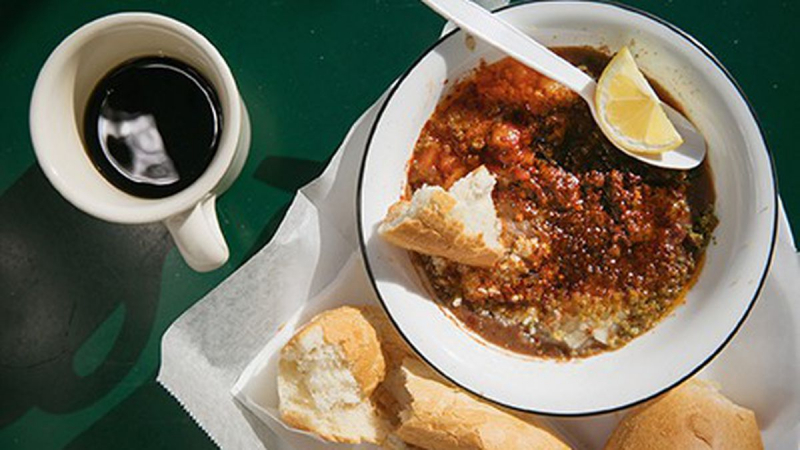
eastbayexpress.com 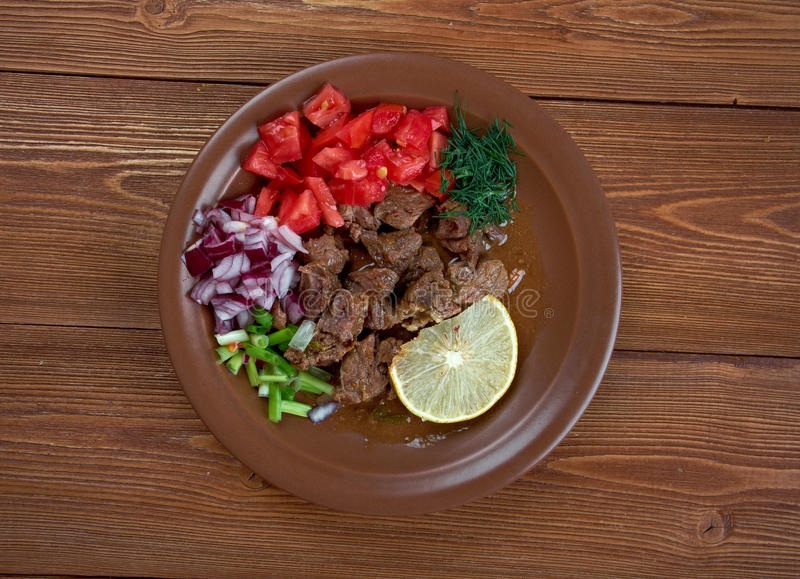
mostphotos.com -
Genfo has a hard, porridge-like texture and is shaped like a volcano. For most Eritreans and Ethiopians, this is a daily breakfast. If you like African food, you'll notice that it has a lot in common with Asida, a flour-based porridge. It's tough to learn anything about Genfo's past. Still, in the 7th century, this type of porridge could have made its way to Eritrea and Ethiopia via the Muslim populace.
Genfo is typically made using barley flour, but it can also be made with wheat or cornmeal. To enhance the flavor, the flour should be dry-roasted. You may make it look like a volcano by adding clarified butter and berbere, and serving it with scoops. Many natives eat it with their hands.Ingredients
- 1 cup wheat or barley flour, 2 cups Water, 1 tablespoon berbere, or more, to taste, 2-3 tablespoons Niter Kibbeh or oil, Touch of cardamom (to taste), Plain yogurt (optional)
Instructions
- To make your Genfo, Ethiopian Porridge add about 3 cups of Water in a pot and a teaspoon of salt and let it boil on a medium hot heat.
- Once the Water boils, slowly add the flour onto the Water while stirring with a wooden spoon.
- After adding a significant amount of flour, the mixture starts to get extremely thick making it hard to stir.
- When it gets to that point, stir very hard so there will not be any lumps.
- Add a little bit of Water to the side and continue stirring so it won’t stick at the bottom and burn.
- When the Water gets absorbed, add a little bit more Water to the side and continue with your stirring for another 4 or 5 minutes until the Water gets absorbed.
- Remove the Genfo or Ethiopian Porridge from the heat.
- Add oil or melted butter into a bowl and scoop the Genfo into the bowl.
- Use your spoon or move the bowl side to side to form a nice ball.
- Right at the center of the Genfo ball, make a well using the back of your spoon.
- Then add your melted butter or oil in the well, followed by the berbere while the Genfo is still hot. Mix the Berebere and oil/melted butter in the well and serve your Genfo immediately.
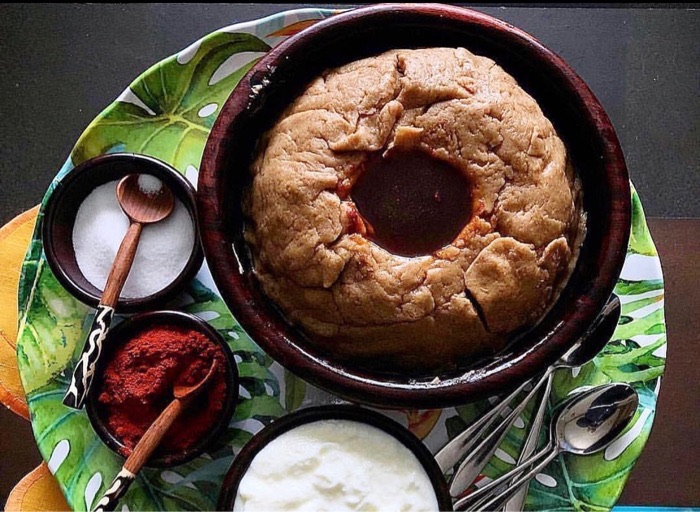
eneblaeats.com 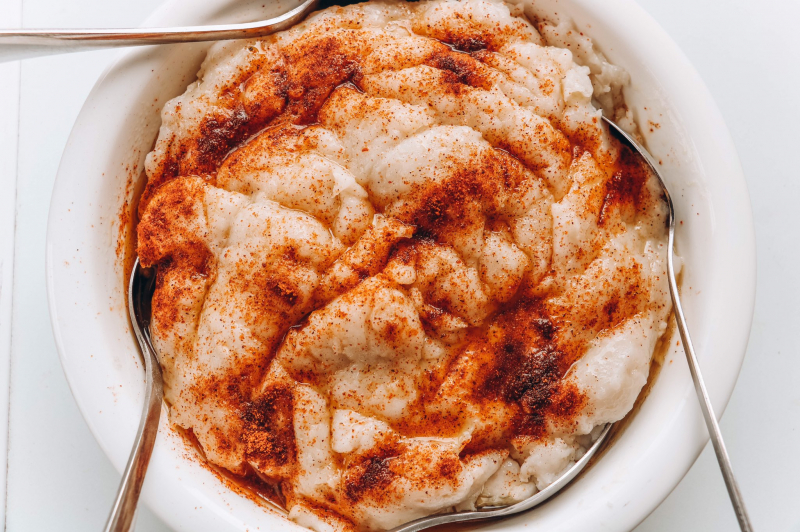
twitter.com -
Because everyone knows how excellent sourdough bread is for your health, the Eritreans have invented their own version, which they call "Injera." It is also a favorite cuisine of many people in Sudan, East Africa, and other parts of the world. Teff, an ancient grain found in Ethiopia's highlands, was once used to make Injera. Many historians believe that teff first existed in Egypt 3350 BC, based on the discovery of teff in Egyptian pyramids. According to another source, the pans used to cook Injera date back to 600 AD. Teff, on the other hand, isn't always available. People can substitute millet, sorghum, or barley if they are short on it.
Ingredients
- 2 cups teff flour, brown or ivory , or substitute a portion of it with some barley or wheat flour
- Note: If you're new to making injera I recommend using a combination of teff and barley or wheat as 100% teff is more challenging to work with.
- 3 cups water
- Note: This method involves wild yeast fermentation. See blog post for details about using commercial yeast as a starter (you'll use about 1/4 teaspoon dry active yeast)
Instructions
- Combine the teff flour and active dry yeast in a large bowl. Add 2 cups lukewarm water and whisk or, more traditionally, use your hand to mix everything together, making sure the mixture is absolutely smooth with no lumps. Cover with plastic wrap and let sit at room temperature until the mixture is bubbly and tastes sour like tangy yogurt, 36 to 48 hours. (It will start bubbling and rising in a matter of hours, but it can take anywhere from 36 to 48 hours to achieve a noticeable level of sourness, which is key to the flavor of the injera; see Cook's Note.) After about 36 hours, begin tasting the mixture; this will help you determine when it's just right and will help prevent it from souring too much.
- At this point, the batter will look separated and watery on top. If you shake the bowl a little, you should see some bubbles rising to the top. Add the self-rising flour and up to 1 cup of water a little at a time. Whisk or use your hand to thoroughly combine into a smooth, thin, pourable mixture with about the consistency of a slightly thicker crepe batter.
- Cover again and let sit for 1 hour.
- Heat a 10-inch nonstick skillet over medium heat for a few minutes. Have a lid for the skillet and a wire baking rack nearby. Whisk 1 teaspoon salt into the batter (it will bubble up). Pour 1/4 cup of the batter into the skillet, tilting and swirling to coat with a thin layer of batter. The batter should spread quickly and easily. (If it's too thick, whisk in a little more water.) Within a matter of seconds, you should start seeing small holes forming and the surface darkening as it cooks from the outside towards the center. When the injera is about 3/4 of the way cooked, cover the skillet and let steam for 1 minute. The injera is cooked when the edges are dry and lifting up from the pan. Carefully run a spatula underneath and transfer to the baking rack to cool completely. Repeat with the remaining batter.
- You can stack the injera only when they are completely cooled; otherwise, they will stick to each other. Wrap the stack of cooled injera with a dry, clean cloth or paper towels to keep them from drying out until ready to serve. Serve at room temperature, or microwave for 30 seconds to heat through.
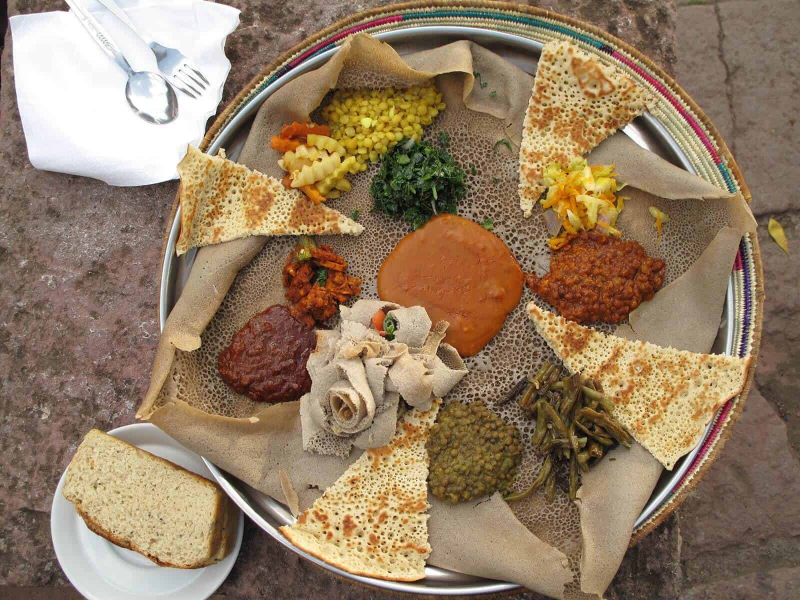
daringgourmet.com 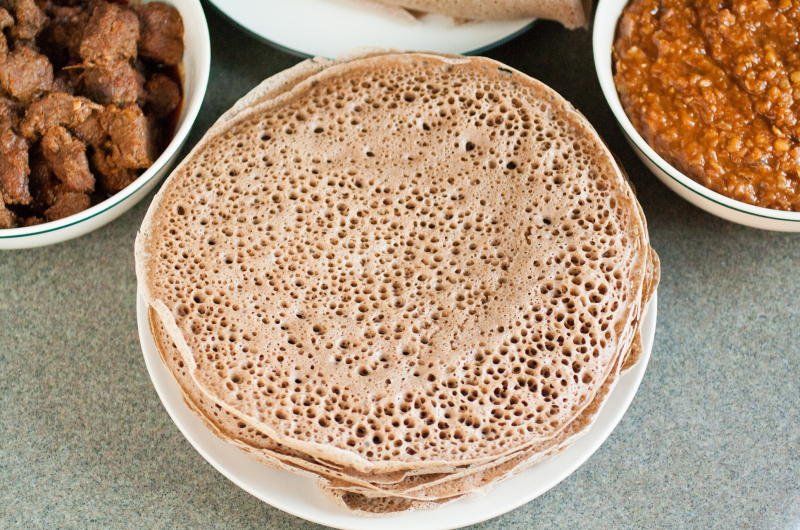
daringgourmet.com -
You've probably heard "Zigni" at least once in your life, even if you're not a true foodie. Why? Zigni is an Eritrean staple and traditional stew. Tsebhi and Injera, as you may know, are long-established dishes in this cuisine. Meat stews are referred to as tsebhi. The cooks will stew the beef for hours with tomatoes, berbere spices, and red onions. Tender fibrous meat with a spicy flavor could be tasted. Because it was colonized by the Italians, tomatoes mirror the cuisine of the ruler country. The berbere spice is the main component in this stew, giving it a fiery flavor and vibrant color. Chili powder and fenugreek must be used in this blend, in addition to salt, ginger, cloves, and other spices.
Ingredients
- For the Zigni: 2 lb beef , cubed, 1 (14 oz) can diced tomatoes in juice , not drained, 3 scallions , minced, 4 cloves garlic , crushed, 4 tablespoons berbere (recipe below), 1 bunch cilantro, 5 tablespoons oil, Salt
- For the Berbere: 1 small onion , chopped, 2 cloves garlic , crushed, 1 cup water, 1 tablespoon salt, 1 tablespoon paprika, 1½ tablespoon chili powder, 1 tablespoon allspice, 1 teaspoon ground ginger, 8 cardamom seeds, ½ teaspoon white pepper, 2 whole cloves, ½ teaspoon ground fenugreek, ½ teaspoon ground coriander, ¼ teaspoon grated nutmeg, 1 pinch ground cinnamon, 1 pinch 4 épices
Instructions
- Zigni
- Heat oil over medium-high heat.
- When the oil is hot, sear the beef cubes until browned.
- Add the onions and garlic. Cook 2 minutes.
- Add the berbere. Mix well and cook for 2 minutes.
- Finish by adding the tomatoes and their juice.
- Season lightly, reduce heat and simmer over low heat for about 2 hours and 30 minutes.
- Thirty minutes before the end of cooking, add the cilantro.
- The meat should fall apart easily and the sauce should be smooth.
- Berbere
- In a pan, roast on low heat for 2 minutes the cardamom, coriander, ginger, fenugreek, nutmeg, cloves, cinnamon and spices 4.
- Allow to cool, stirring the mixture occasionally.
- Add garlic, onion, half the salt and 2 tablespoons of water. Mix everything. Set aside.
- In the pan, put chili pepper, white pepper, paprika, allspice and remaining salt.
- Toast on low heat for 1 minute. Pour the remaining water gradually, stirring constantly.
- Add the spice mixture, stir thoroughly and cook over very low heat for 15 minutes.
- Put this mixture in a jar.
- Cool and cover the top with a layer of oil.
- Keep 10 days in the refrigerator.
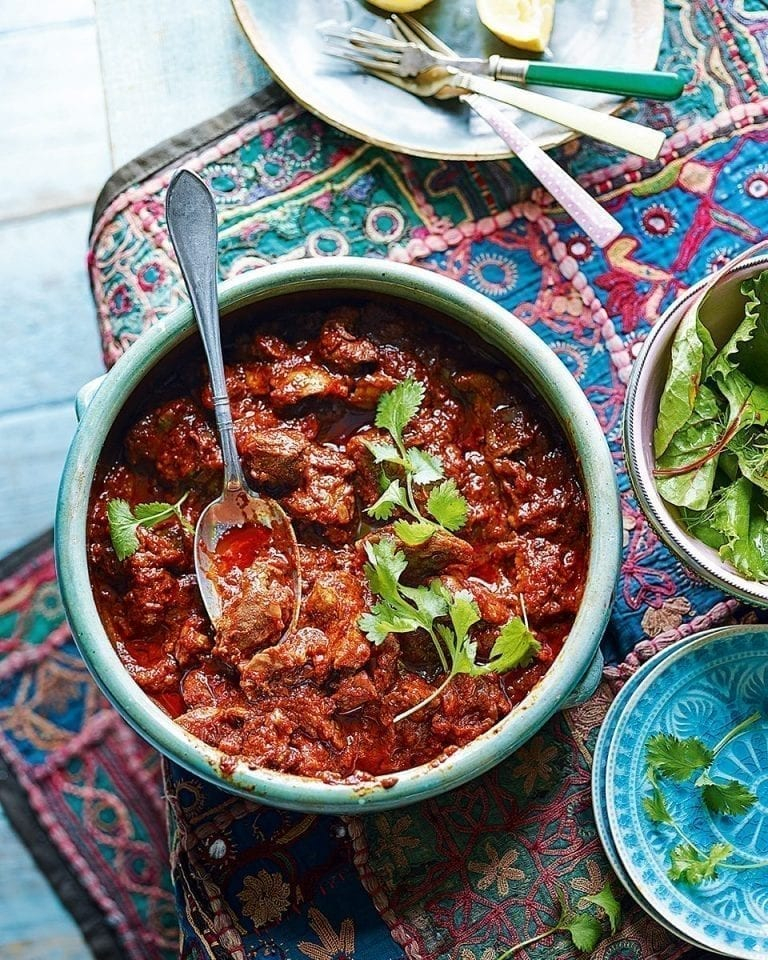
deliciousmagazine.co.uk 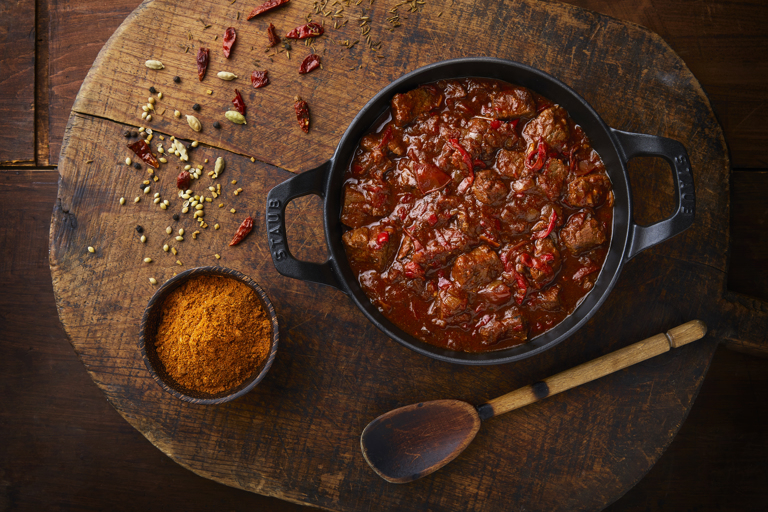
greatbritishchefs.com -
In Eritrean cuisine, tsebhi, or stews, are a must-have. Remember to request a bowl of Shiro if you're looking for a vegetarian dinner. This is a spicy stew made with chickpeas or ground board beans. Shiro comes in a variety of flavors that you can sample on your travels. Tegabino Shiro is a vegan meal with strongly spicy chickpeas, fava beans, and other ingredients. People frequently serve it in a clay pot to keep it warm. If you wish to add more protein to this dish, ask for Bozena Shiro. To gratify your taste buds, the dish uses seasoned clarified butter or meat. You can find this dish on special holidays, such as Lent and Ramadan, in addition to everyday meals.
Ingredients
- ½ cup oil, ½ cup chickpea flour, 2 medium onions pureed, 1 roma tomato pureed, 4 cloves of garlic chopped, 2 tablespoons niter kibbeh Ethiopian spiced clarified butter, 2 to 2 ½ cups of water, 3 tablespoons berbere spice, 1 teaspoon garlic powder, ¼ teaspoon sugar, Salt to taste, 1 jalepeno chopped (optional)
Instructions
- Bring a heavy bottom stockpot to medium heat. Add pureed onions to the dry pan, and saute until they become dry and start to take on color- about 4-5 minutes. Add the oil and berbere spice. Saute for 1-2 minutes until fragrant.
- Next add tomato and chopped garlic. Saute for 2-3 minutes more.
- Now start whisking in about half of the chickpea flour. Gradually start to add about 1 cup of water. Whisk in the remaining chickpea flour and an additional 1 cup of water. Whisk until mixture is very smooth. Add remaining ½ cup of water if you prefer your shiro a little thinner.
- Heat until the shiro begins to pop (simmer). Then add the niter kibbeh, garlic powder, sugar, and salt to taste, stirring until combined.
- Simmer for about 5-10 minutes over low heat until the flavors combine and the oil separates slightly from the shiro.
- Garnish with jalepeno, if desired.
- Serve with fresh injera.
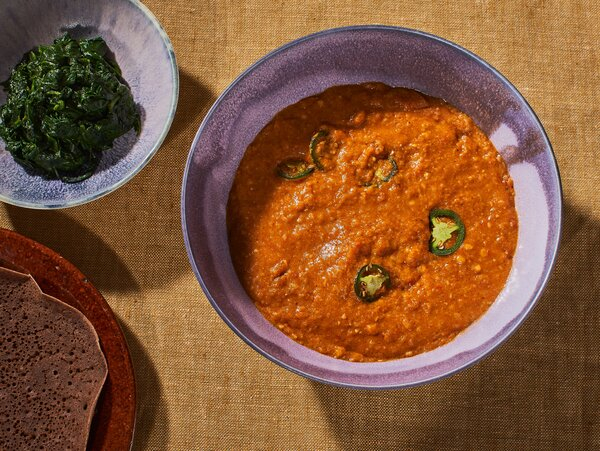
thegourmetgourmand.com 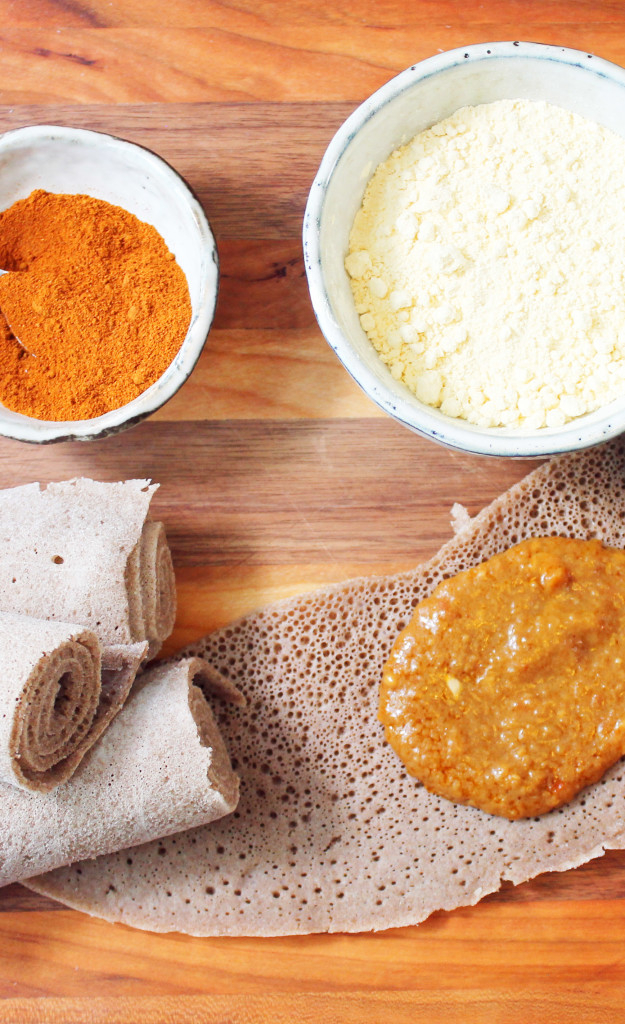
thegourmetgourmand.com








